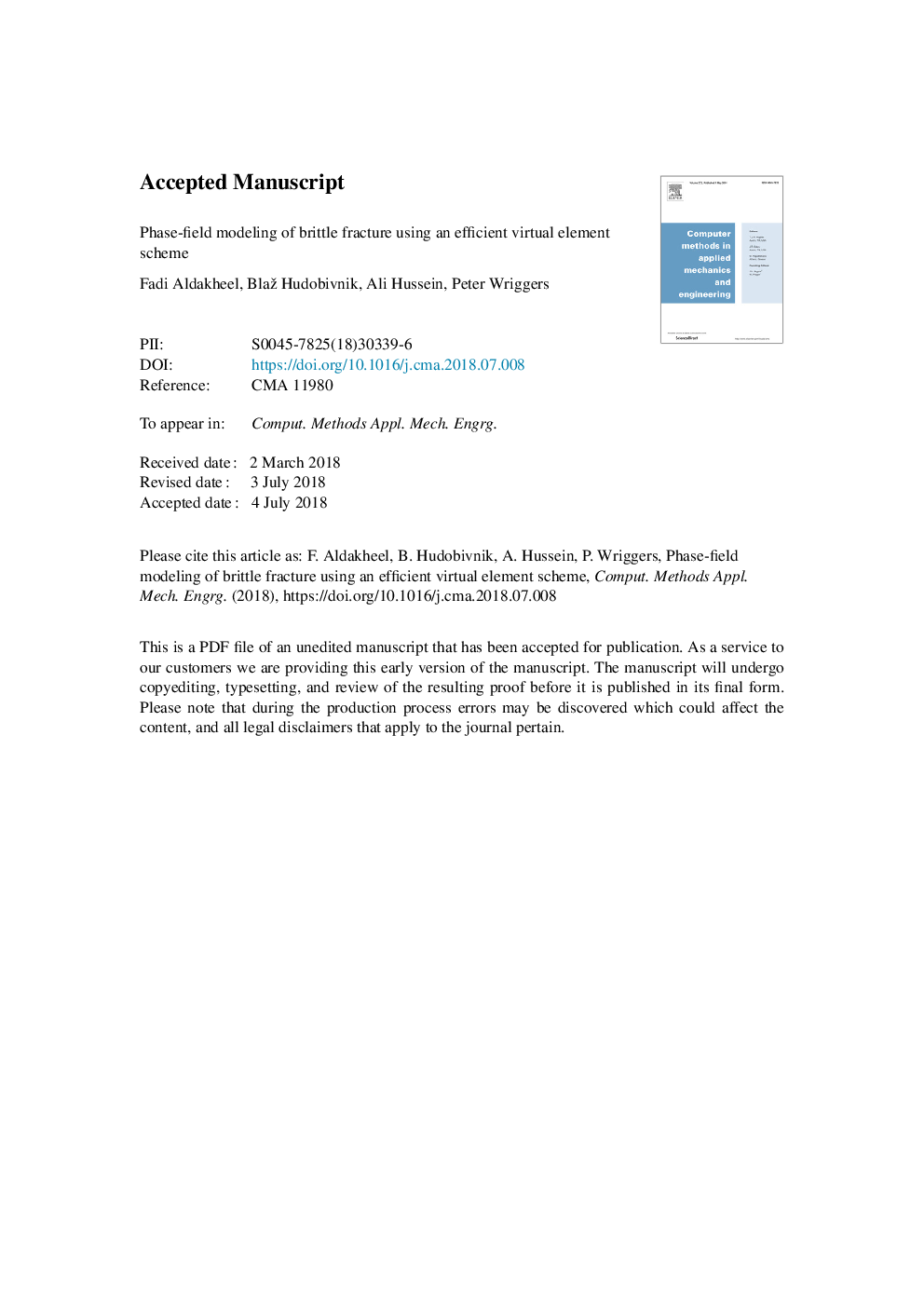| Article ID | Journal | Published Year | Pages | File Type |
|---|---|---|---|---|
| 6915276 | Computer Methods in Applied Mechanics and Engineering | 2018 | 26 Pages |
Abstract
This work addresses an efficient low order virtual element method (VEM) for the phase-field modeling of isotropic brittle fracture. Virtual elements were introduced in the last decade and applied to various problems in solid mechanics. The phase-field approach regularizes sharp crack surfaces within a pure continuum setting by a specific gradient damage modeling with constitutive terms rooted in fracture mechanics, see Miehe et al. [23] and Miehe et al. [29]. In the presented contribution, we propose a rigorous variational-based framework for the phase-field modeling of brittle fracture in elastic solids undergoing small strains. The key goal here, is the extension towards the recently developed virtual element formulation due to the flexible choice of nodes number in an element which can be changed easily during the simulation process, as outlined in Wriggers et al. [11] and Wriggers et al. [18]. To this end, the potential density is formulated in terms of suitable polynomial functions, instead of computing the unknown shape functions for complicated element geometries, e.g. arbitrary convex or concave polygonal elements. An important aspect of this work is the introduction of an incremental minimization principle, with a novel construction of the stabilization density for the coupled multi-field problem. On the computational side, a robust and efficient monolithic scheme is employed using the software tool AceFEM program in the numerical implementation to compute the unknowns (displacement and crack phase-field), see Korelc and Wriggers [52]. The performance of the formulation is underlined by means of representative examples.
Related Topics
Physical Sciences and Engineering
Computer Science
Computer Science Applications
Authors
Fadi Aldakheel, Blaž Hudobivnik, Ali Hussein, Peter Wriggers,
